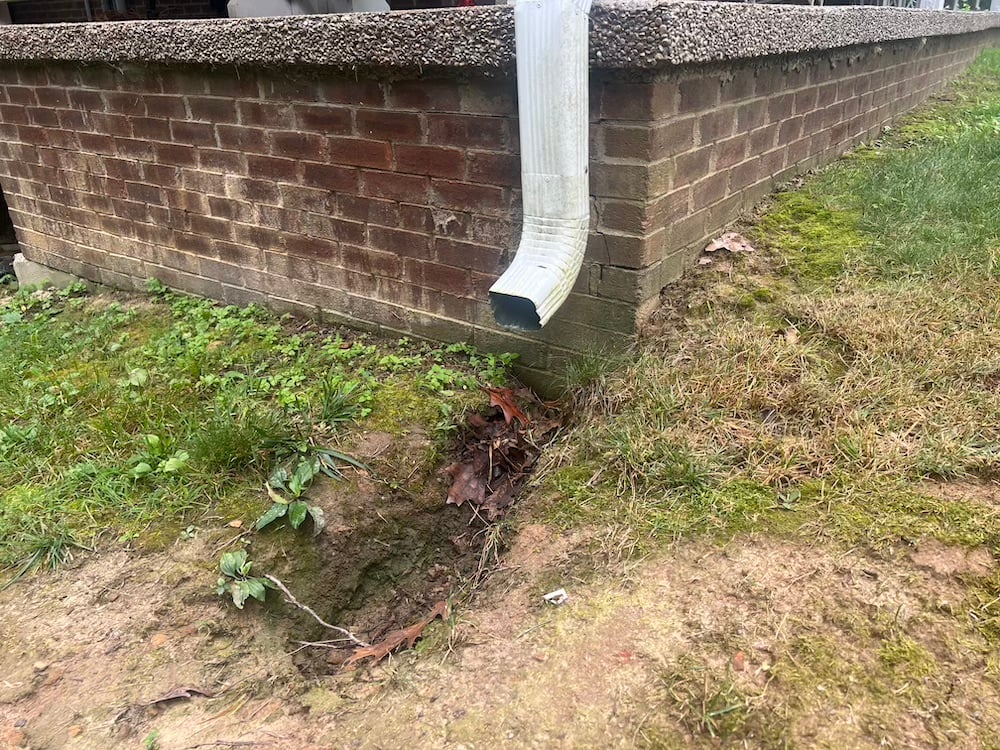Search for topics or resources
Enter your search below and hit enter or click the search icon.
Providing your email address will keep you updated should we need to provide updates specific to your location.
May 16th, 2025 | 2 min. read
By Sarah Etler

Water might be essential for life, but it’s no friend to your home’s foundation or concrete surfaces. If your downspouts are spilling water right next to your basement, crawlspace, or concrete slab, you could be setting yourself up for a world of trouble – think leaks, foundation damage, and sinking concrete.
Fortunately, there are several ways to redirect that water safely away. Some methods are simple but ineffective, while others take a little more effort but provide long-term protection. Let’s walk through your options when it comes to redirecting downspouts.
Let’s talk about why redirecting downspouts is such a big deal.
Letting downspout water drain too close to your home is like ignoring a small drip under the sink. Over time, it can lead to bigger, more expensive problems.
Related Resource: Do I Have to Clean My Gutters? + Gutter and Downspout Maintenance Tips

The simplest way to end a downspout is with a short elbow attachment that points the water from the gutters out onto the ground.
The problem? Water doesn’t magically vanish – it seeps straight into the soil around your foundation or under your concrete.
Over time, this leads to erosion, leaks, and concrete sinking. In short, elbows alone are a bad idea.
A splash block (typically made of plastic or concrete) directs water a couple of feet away from your foundation.
The problem? Most splash blocks aren’t long enough to get the water far enough away. After hitting the block, water still soaks into the ground near your home.
The typical recommendation is to direct water at least 10 feet away from your foundation or concrete slabs, following a downward slope.

A simple fix is to attach a downspout extension or a corrugated drain pipe that runs several feet away from the house.
These extensions can be flexible or rigid and help move water further into your yard, where it can safely disperse.
Verdict? A solid solution for minor water problems, but not the best for long-term foundation protection.
For a long-term solution, a buried drain pipe is the best way to go. This is because the pipes connect to the downspout and move water from the gutters completely away from the house.
If your downspouts are dumping water near your home, fixing the issue now can save you thousands of dollars in foundation repairs, waterproofing, and concrete leveling.
Investing in proper drainage today means less hassle, fewer repairs, and a healthier foundation for years to come. Now, grab that shovel (or call a pro), and give your home the drainage solution it deserves!
Already struggling with issues due to poor drainage? Request an estimate with your local A-1 Concrete Leveling team to discuss concrete repair and maintenance options!
Sarah Etler joined A-1 Concrete Leveling after receiving her Bachelor of Arts degree in English from Northern Kentucky University. As A-1's Content Marketing Manager, she works closely with industry experts to produce content that will best answer questions related to concrete repair and maintenance practices. Sarah loves living a life full of discovery and is excited every day to see what new things she can learn and share with those around her.